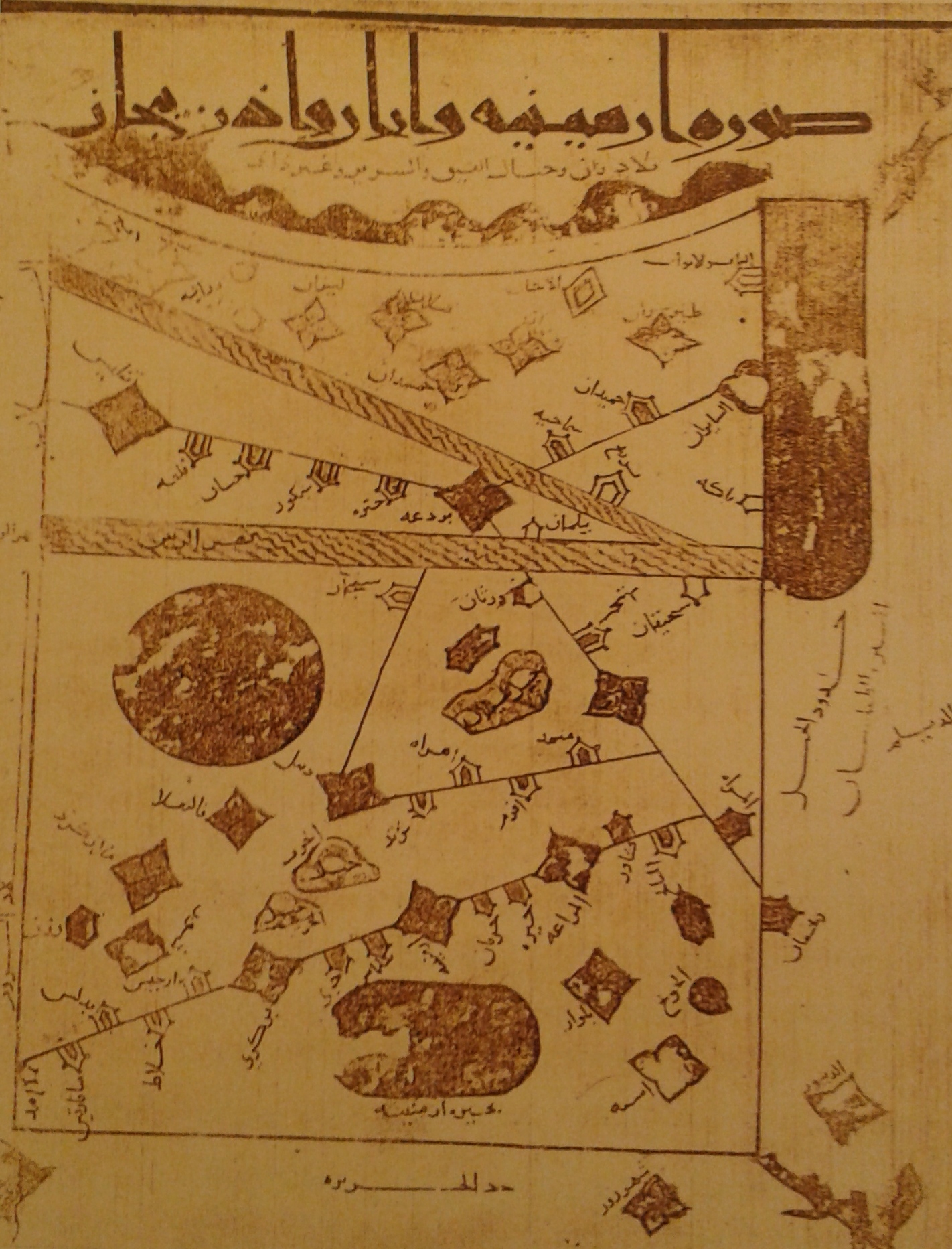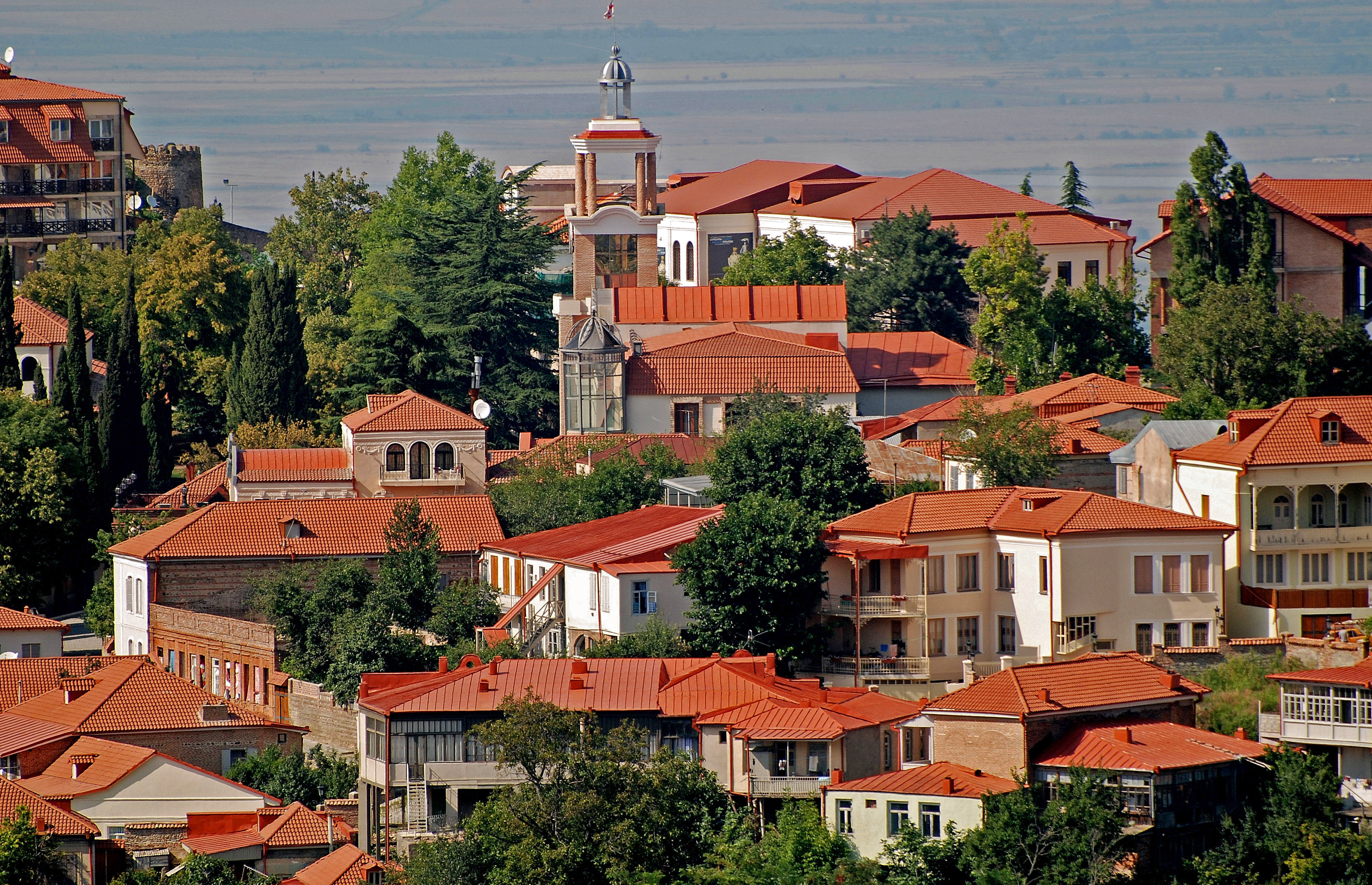|
Kingdom Of Kakheti
The Second Kingdom of Kakheti ( ka, კახეთის სამეფო, tr; also spelled Kaxet'i or Kakhetia) was a late medieval/ early modern monarchy in eastern Georgia, centered at the province of Kakheti, with its capital first at Gremi and then at Telavi. It emerged in the process of a tripartite division of the Kingdom of Georgia in 1465 and existed, with several brief intermissions, until 1762 when Kakheti and the neighboring Georgian Kingdom of Kartli were merged through a dynastic succession under the Kakhetian branch of the Bagrationi dynasty. Through much of this period, the kingdom was a vassal of the successive dynasties of Iran, and to a much shorter period Ottoman Empire, but enjoyed intermittent periods of greater independence, especially after 1747. Early history A previous Kingdom of Kakheti was created in the 8th century following the successful rebellion of the mountainous tribes of Tzanaria, which freed a large part of Georgia from Arab control. R ... [...More Info...] [...Related Items...] OR: [Wikipedia] [Google] [Baidu] |
Monarchy
A monarchy is a form of government in which a person, the monarch, is head of state for life or until abdication. The political legitimacy and authority of the monarch may vary from restricted and largely symbolic (constitutional monarchy), to fully autocratic (absolute monarchy), and can expand across the domains of the executive, legislative, and judicial. The succession of monarchs in many cases has been hereditical, often building dynastic periods. However, elective and self-proclaimed monarchies have also happened. Aristocrats, though not inherent to monarchies, often serve as the pool of persons to draw the monarch from and fill the constituting institutions (e.g. diet and court), giving many monarchies oligarchic elements. Monarchs can carry various titles such as emperor, empress, king, queen, raja, khan, tsar, sultan, shah, or pharaoh. Monarchies can form federations, personal unions and realms with vassals through personal association with the monarch, whi ... [...More Info...] [...Related Items...] OR: [Wikipedia] [Google] [Baidu] |
Armenia
Armenia (), , group=pron officially the Republic of Armenia,, is a landlocked country in the Armenian Highlands of Western Asia.The UNbr>classification of world regions places Armenia in Western Asia; the CIA World Factbook , , and ''Oxford Reference Online'' also place Armenia in Asia. It is a part of the Caucasus region; and is bordered by Turkey to the west, Georgia to the north, the Lachin corridor (under a Russian peacekeeping force) and Azerbaijan to the east, and Iran and the Azerbaijani exclave of Nakhchivan to the south. Yerevan is the capital, largest city and the financial center. Armenia is a unitary, multi-party, democratic nation-state with an ancient cultural heritage. The first Armenian state of Urartu was established in 860 BC, and by the 6th century BC it was replaced by the Satrapy of Armenia. The Kingdom of Armenia reached its height under Tigranes the Great in the 1st century BC and in the year 301 became the first state in the world to adopt ... [...More Info...] [...Related Items...] OR: [Wikipedia] [Google] [Baidu] |
Arab Rule In Georgia
Arab rule in Georgia, natively known as Araboba ( ka, არაბობა) refers to the period in the History of Georgia when all or part of the country was under political domination of Muslim Arab rulers, from the first Arab incursions in the mid-7th century until the final defeat of the Emirate of Tbilisi at the hands of King David IV in 1122. Compared with other regions which endured Muslim conquests, Georgia's culture, and even political structure was not much affected by the Arab presence, as the people kept their faith, the nobles their fiefdoms, and the foreign rulers mostly insisted on the payment of tribute, which they could not always enforce. Still, repeated invasions and military campaigns by the Arabs devastated Georgia on many occasions, and the Caliphs retained suzerainty over large parts of the country and exerted influence over the internal power dynamics during most of the period. The history of Arab rule in Georgia can be divided into 3 main periods: from the ... [...More Info...] [...Related Items...] OR: [Wikipedia] [Google] [Baidu] |
Tsanareti
Tsanareti ( ka, წანარეთი) (alternative spellings: Tsanaria, Canaria, Sanaria, Sanaryia) was a historic district (Khevi) in the early medieval Caucasus, lying chiefly in what is now the northeastern corner in Georgia’s region of Mtskheta-Mtianeti. History In the narrow sense of the term Tsanareti (reduced later simply to Khevi) was applied by the medieval Georgian annals to the area around the Darial Pass, inhabited by the Tsanars. This warlike tribe is already known as Sanars to Ptolemy. According to the 8th century Arab historian Masudi, the Tsanars, though Christians, claimed their origin from Nizar b. Maad b. Murad, and then from a branch of the Ukail family. Although this claim is completely rejected by modern scholars, the origins of the Tsanars are still uncertain today. The tribe is sometimes claimed to be an offshoot of Sarmatians. Vladimir Minorsky believes, however, that they were the Nakh-speakers. Whatever their origin, the Tsanars seem to have adopt ... [...More Info...] [...Related Items...] OR: [Wikipedia] [Google] [Baidu] |
Bagrationi Dynasty
The Bagrationi dynasty (; ) is a royal dynasty which reigned in Georgia from the Middle Ages until the early 19th century, being among the oldest extant Christian ruling dynasties in the world. In modern usage, the name of the dynasty is sometimes Hellenized and referred to as the Georgian Bagratids, also known in English as the Bagrations. The origins of the dynasty are disputed. The early Georgian Bagratids gained the Principality of Iberia through dynastic marriage after succeeding the Chosroid dynasty at the end of the 8th century. In 888 Adarnase IV of Iberia restored the Georgian monarchy; various native polities then united into the Kingdom of Georgia, which prospered from the 11th to the 13th century. This period of time, particularly the reigns of David IV the Builder (1089–1125) and of his great-granddaughter Tamar the Great (1184–1213) inaugurated the Georgian Golden Age in the history of Georgia. Montgomery-Massingberd, Hugh. " Burke's Royal Families of the Worl ... [...More Info...] [...Related Items...] OR: [Wikipedia] [Google] [Baidu] |
Triarchy And Collapse Of The Kingdom Of Georgia
The collapse of the Georgian realm ( ka, ქართული სახელმწიფოს დაშლა, tr) was a political and territorial fragmentation process that resulted in the dynastic triumvirate military conflict of the Bagrationi monarchs and war of succession in the united Kingdom of Georgia culminating during the second half of the 15th century. The fragmentation of the unified realm started in the 13th century during the Mongol invasions that resulted in the establishment of ''de facto'' independent Kingdom of Western Georgia led by King David VI Narin and his successors, even though several reunifications would take place that will bring back monarchy united in fold. Nevertheless, the reunification came up to be ephemeral as the fragmentation would escalate through dynastic triarchy. Championed under the reign of King George VIII, it continued under Bagrat VI and Constantine II and included the entire country, with clashes all around the realm. The dyna ... [...More Info...] [...Related Items...] OR: [Wikipedia] [Google] [Baidu] |
Kakheti
Kakheti ( ka, კახეთი ''K’akheti''; ) is a region (mkhare) formed in the 1990s in eastern Georgia from the historical province of Kakheti and the small, mountainous province of Tusheti. Telavi is its capital. The region comprises eight administrative districts: Telavi, Gurjaani, Qvareli, Sagarejo, Dedoplistsqaro, Signagi, Lagodekhi and Akhmeta. Kakheti is bordered by the Russian Federation with the adjacent subdivisions ( Chechnya to the north, and Dagestan to the northeast), the country of Azerbaijan to the southeast, and with the regions of Mtskheta-Mtianeti and Kvemo Kartli to the west. Kakheti has a strong linguistic and cultural identity, since its ethnographic subgroup of Kakhetians speak the Kakhetian dialect of Georgian. The Georgian David Gareja monastery complex is partially located in this province and is subject to a border dispute between Georgian and Azerbaijani authorities. Popular tourist attractions in Kakheti include Tusheti, Gremi, Signagi, Kveter ... [...More Info...] [...Related Items...] OR: [Wikipedia] [Google] [Baidu] |
Mkhare
A ''mkhare'' ( ka, მხარე, ''mxare'') is a type of administrative division in the country of Georgia (country), Georgia. It is usually translated as "region". According to presidential decrees in 1994 and 1996, Georgia's division into regions is on a provisional basis until the secessionist conflicts in Abkhazia and South Ossetia are resolved. The regional administration is headed by a State Commissioner (სახელმწიფო რწმუნებული, ''Saxelmćipo Rćmunebuli'', usually translated as "Governor"), an official appointed by the President of Georgia, President. The regions are further subdivided into ''raionis'' (districts). There are 9 regions in Georgia (see also map opposite): See also * Administrative divisions of Georgia (country), Administrative divisions of Georgia References {{Authority control Regions of Georgia (country), Types of administrative division Georgian words and phrases ... [...More Info...] [...Related Items...] OR: [Wikipedia] [Google] [Baidu] |
Eastern Georgia (country)
Eastern Georgia ( ka, აღმოსავლეთ საქართველო, ''aghmosavlet' sak'art'velo'') is a geographic area encompassing the territory of the Caucasian nation of Georgia to the east and south of the Likhi and Meskheti Ranges, but excluding the Black Sea region of Adjara. Eastern Georgia includes the historic Georgian provinces of Samtskhe, Javakheti, Kartli with the national capital city of Tbilisi, Kakheti, Pshavi, Mtiuleti, Tusheti, Khevsureti, and Khevi. Current administrative regions (mkhare) of eastern Georgia are: Samtskhe-Javakheti, Shida Kartli, Kvemo Kartli, the city of Tbilisi, Mtskheta-Mtianeti, and Kakheti. History The regions of Kartli and Kakheti had been under Iranian suzerainty since 1555 following the Peace of Amasya signed with neighbouring rivalling Ottoman Turkey. With the death of Nader Shah in 1747, both kingdoms broke free of Iranian control and were reunified through a personal union under the energetic king Heraclius (E ... [...More Info...] [...Related Items...] OR: [Wikipedia] [Google] [Baidu] |
Monarchy
A monarchy is a form of government in which a person, the monarch, is head of state for life or until abdication. The political legitimacy and authority of the monarch may vary from restricted and largely symbolic (constitutional monarchy), to fully autocratic (absolute monarchy), and can expand across the domains of the executive, legislative, and judicial. The succession of monarchs in many cases has been hereditical, often building dynastic periods. However, elective and self-proclaimed monarchies have also happened. Aristocrats, though not inherent to monarchies, often serve as the pool of persons to draw the monarch from and fill the constituting institutions (e.g. diet and court), giving many monarchies oligarchic elements. Monarchs can carry various titles such as emperor, empress, king, queen, raja, khan, tsar, sultan, shah, or pharaoh. Monarchies can form federations, personal unions and realms with vassals through personal association with the monarch, whi ... [...More Info...] [...Related Items...] OR: [Wikipedia] [Google] [Baidu] |
Late Middle Ages
The Late Middle Ages or Late Medieval Period was the Periodization, period of European history lasting from AD 1300 to 1500. The Late Middle Ages followed the High Middle Ages and preceded the onset of the early modern period (and in much of Europe, the Renaissance). Around 1300, centuries of prosperity and growth in Europe came to a halt. A series of famines and Plague (disease), plagues, including the Great Famine of 1315–1317 and the Black Death, reduced the population to around half of what it had been before the calamities. Along with depopulation came social unrest and endemic warfare. France and England experienced serious peasant uprisings, such as the Jacquerie and the Peasants' Revolt, as well as over a century of intermittent conflict, the Hundred Years' War. To add to the many problems of the period, the unity of the Catholic Church was temporarily shattered by the Western Schism. Collectively, those events are sometimes called the Crisis of the Late Middle Ages. D ... [...More Info...] [...Related Items...] OR: [Wikipedia] [Google] [Baidu] |






.png)

